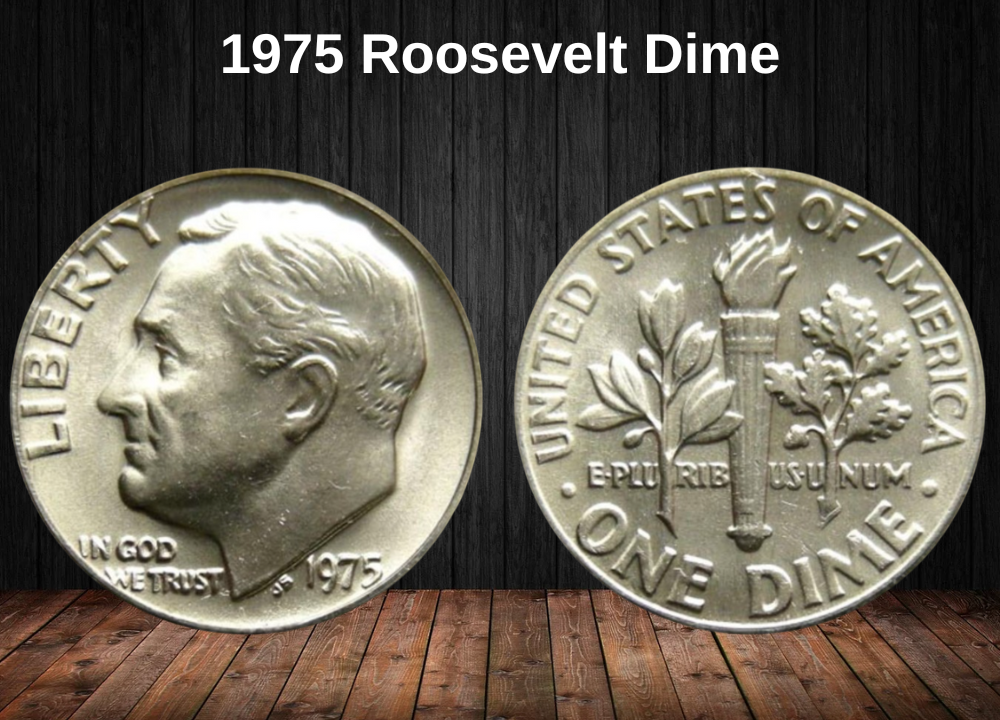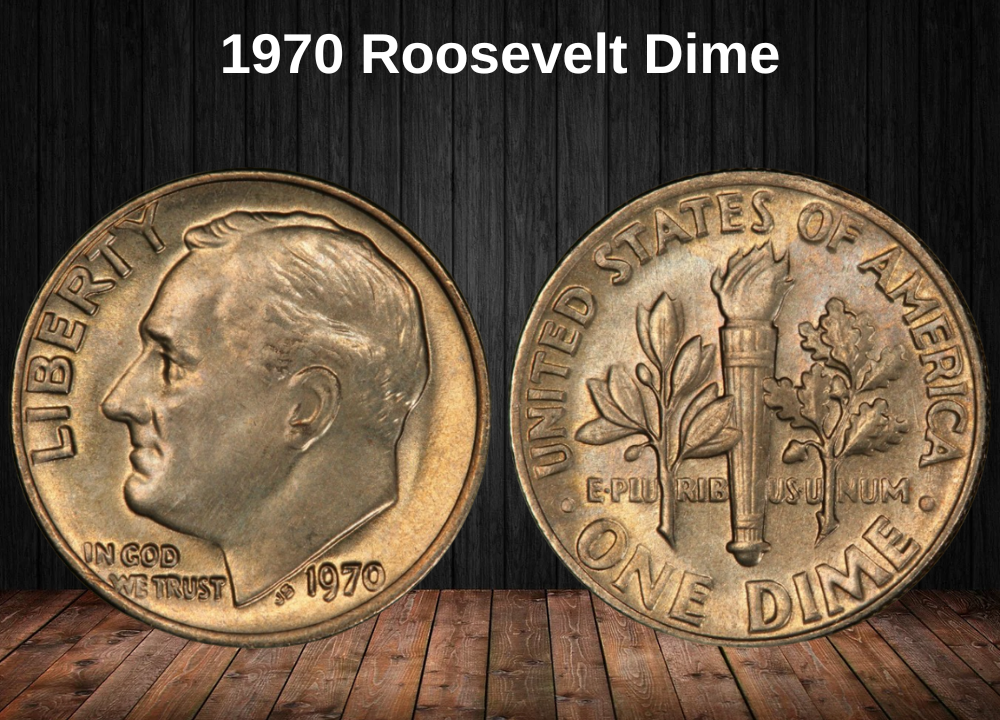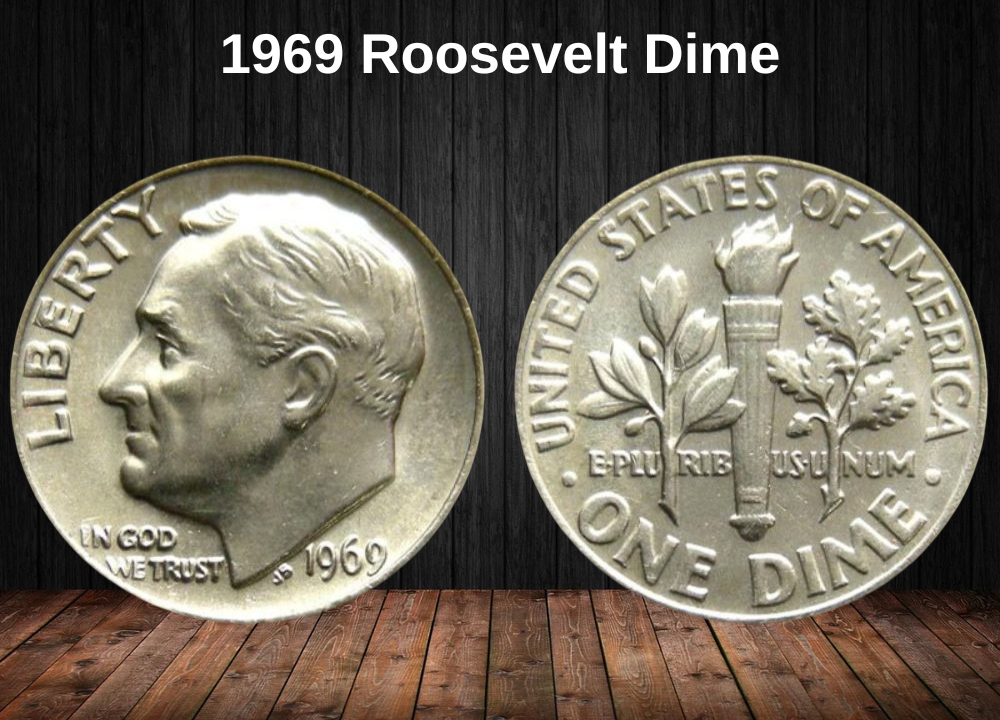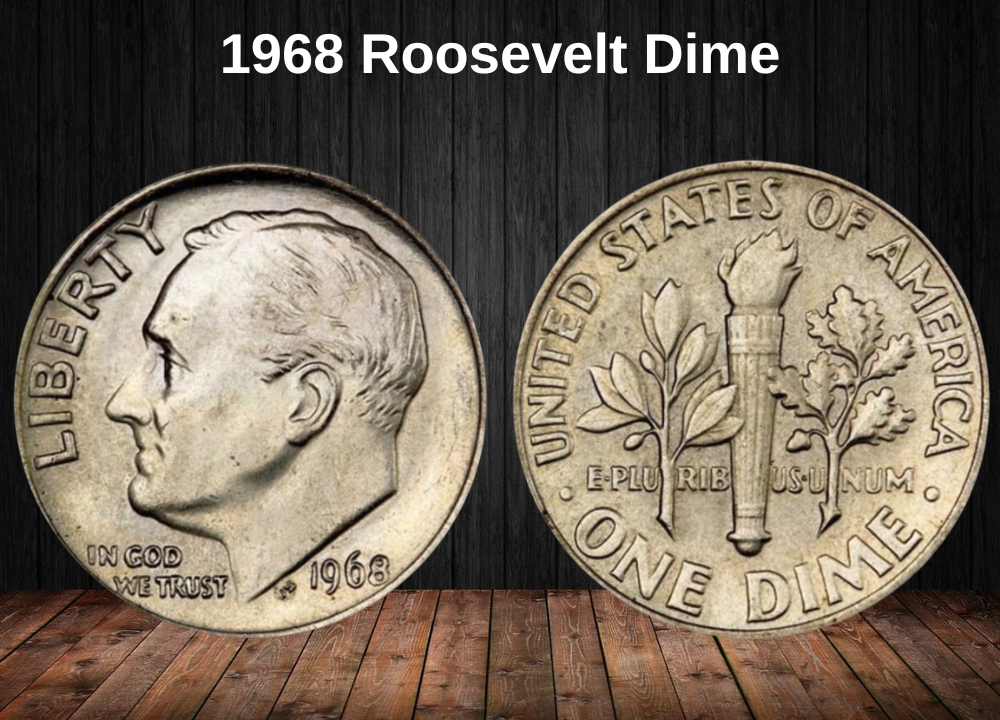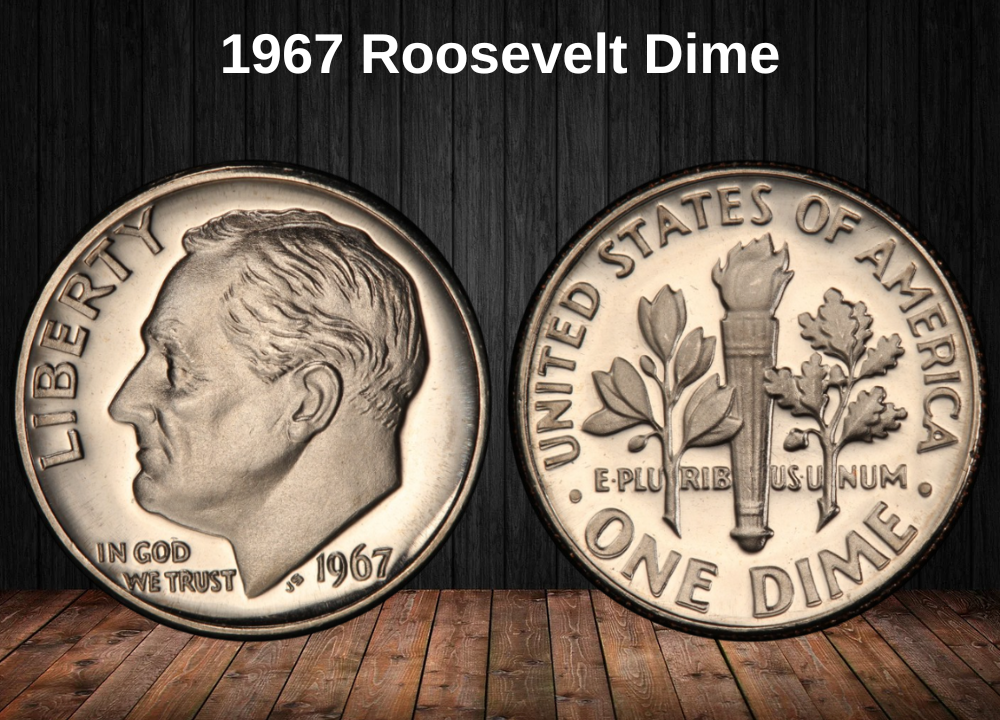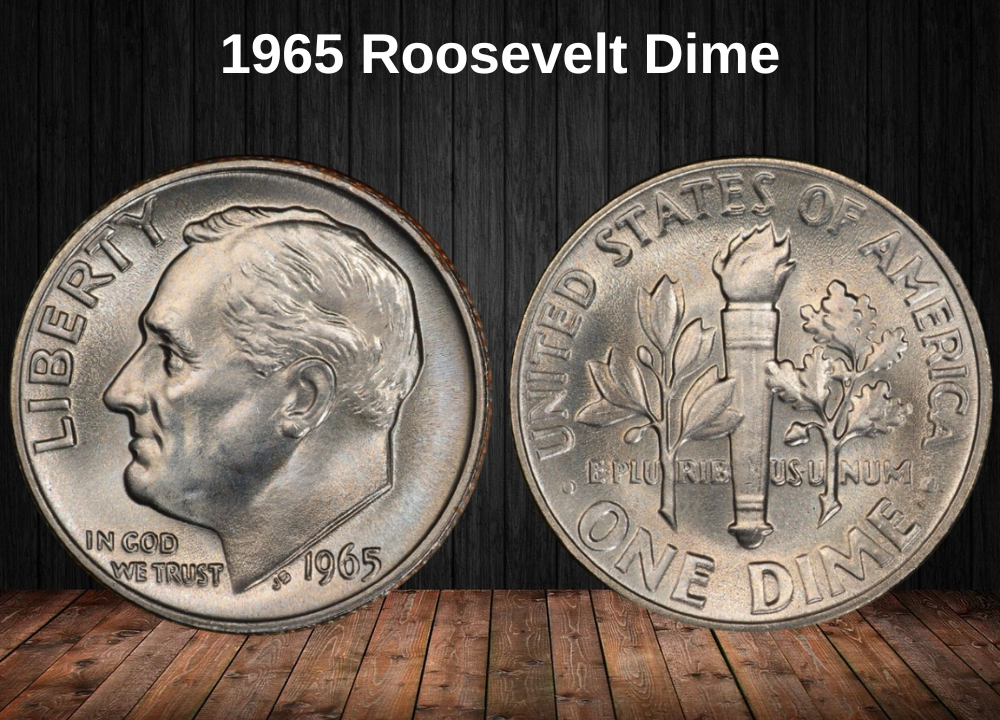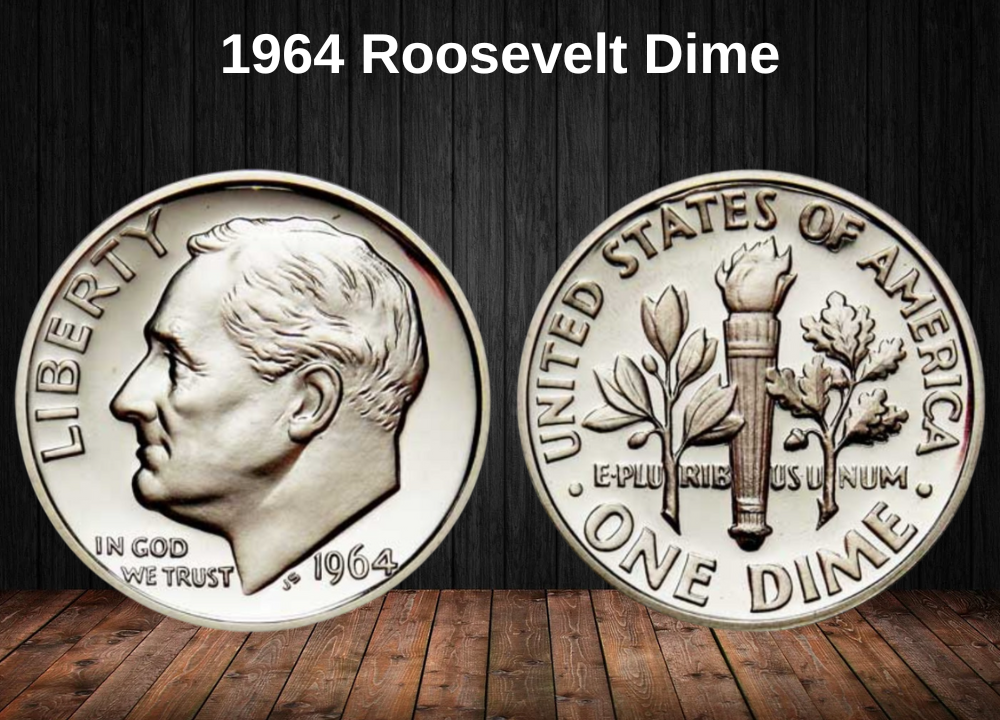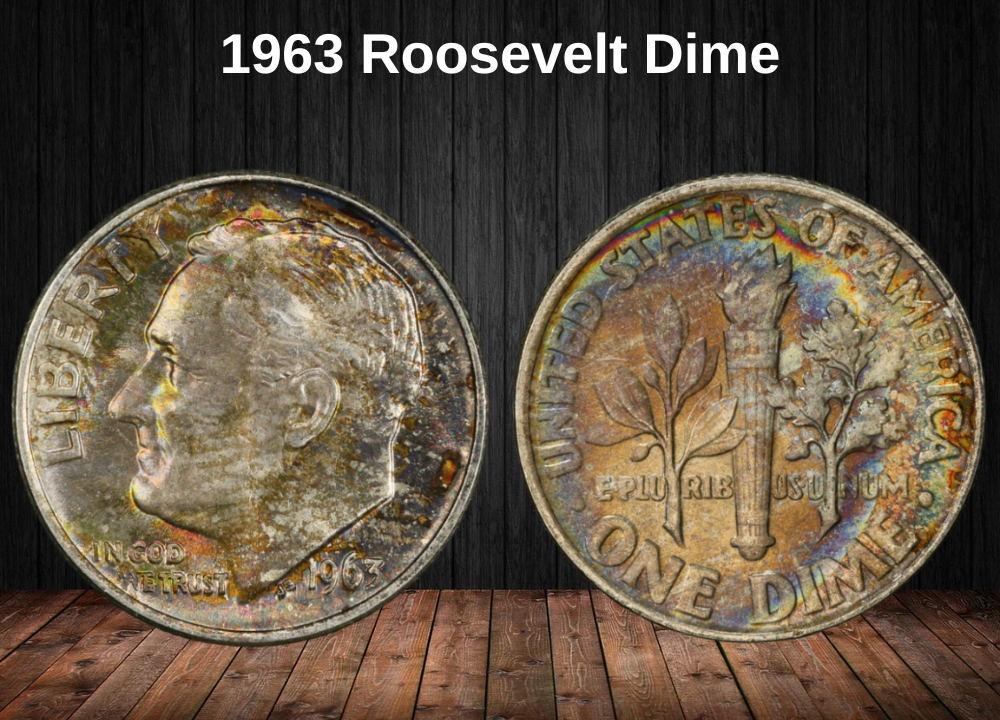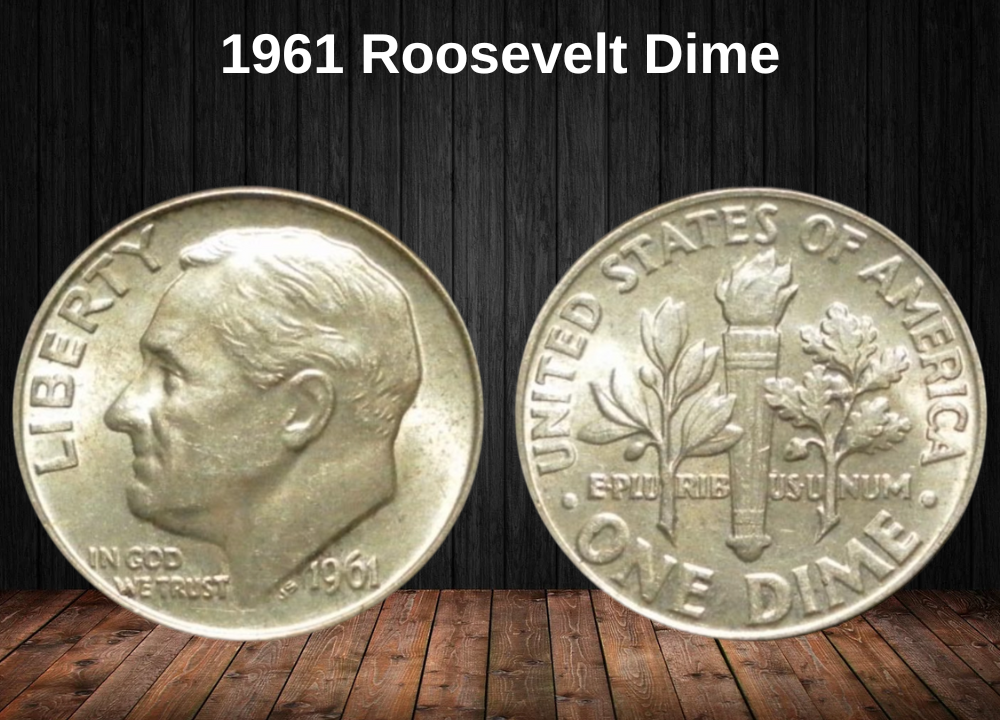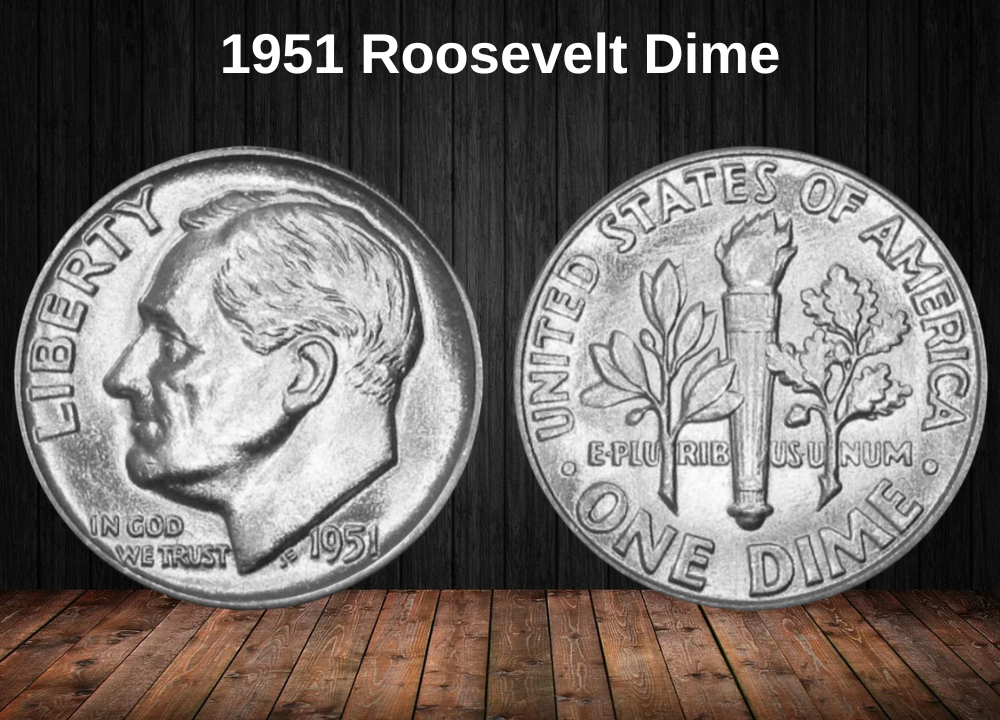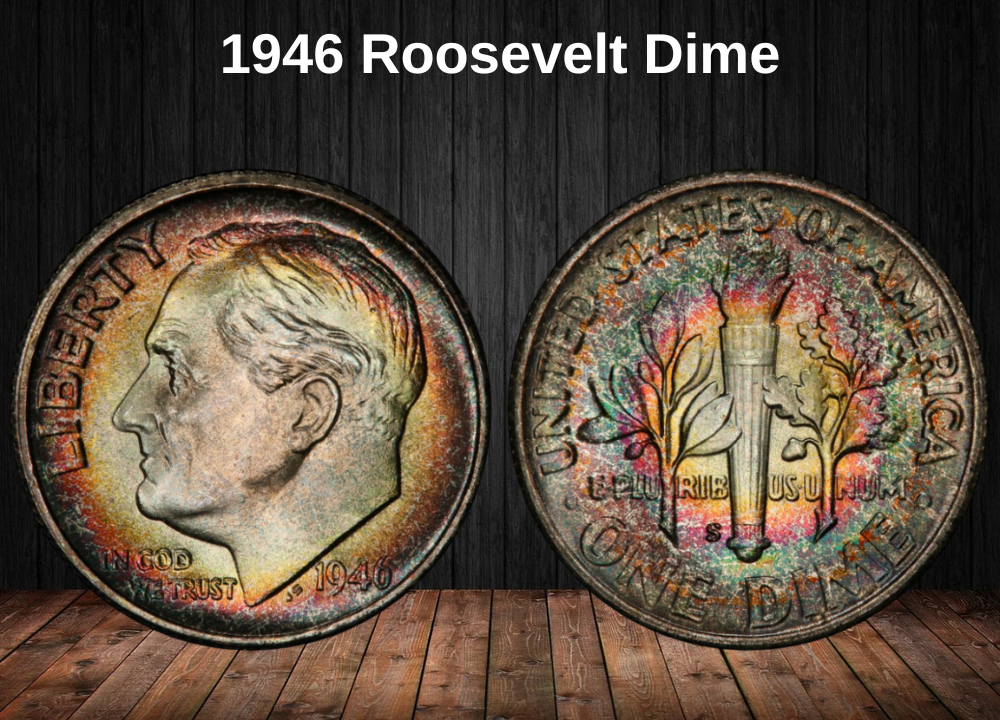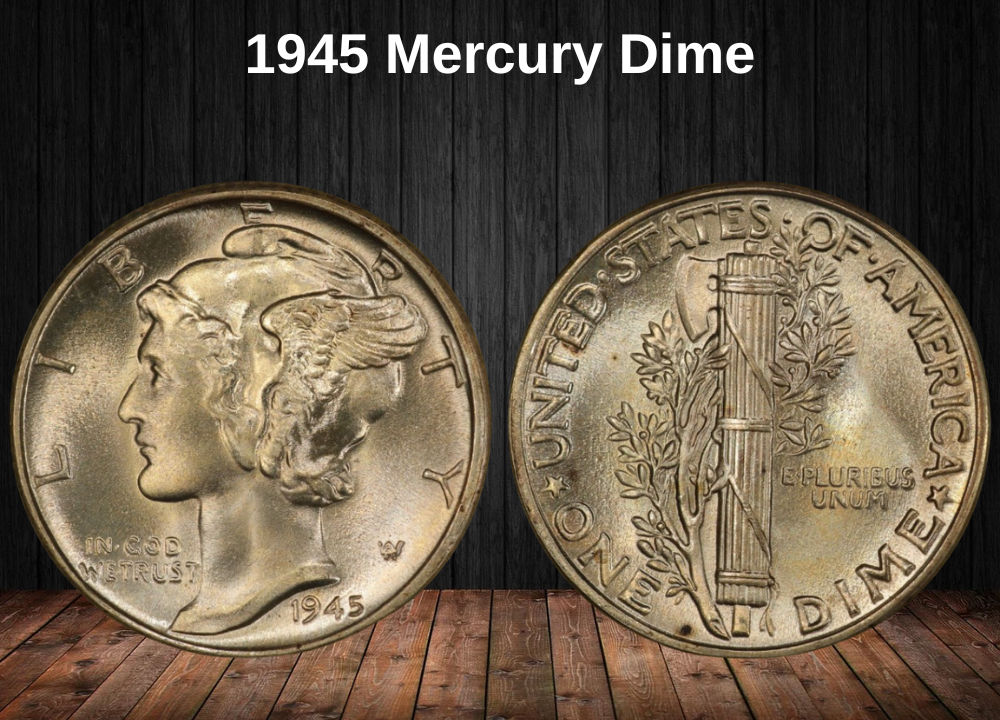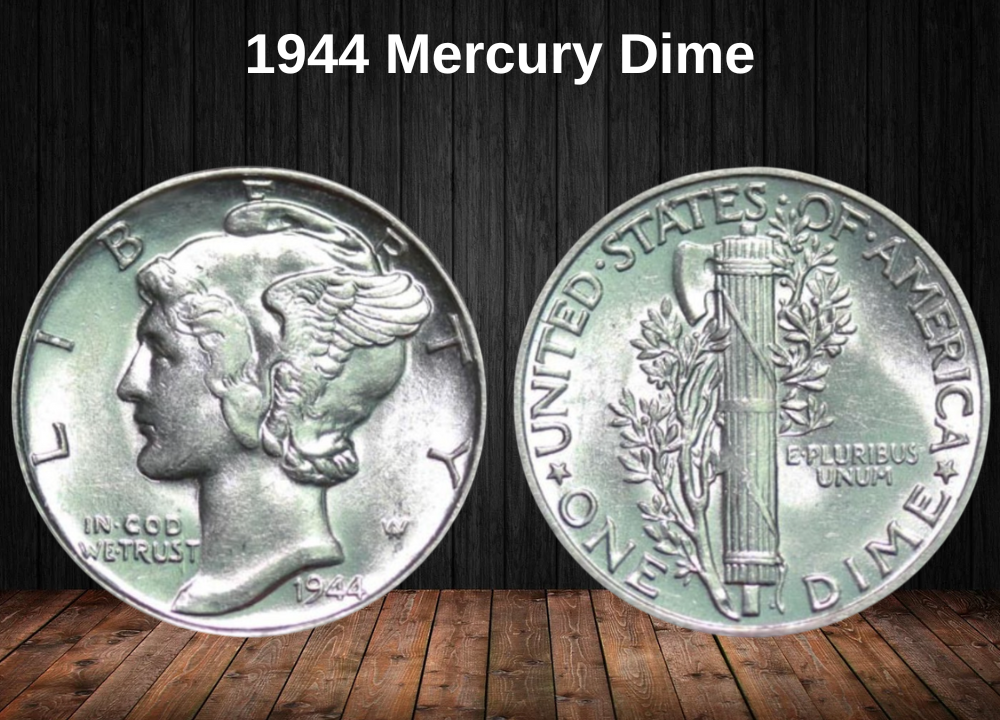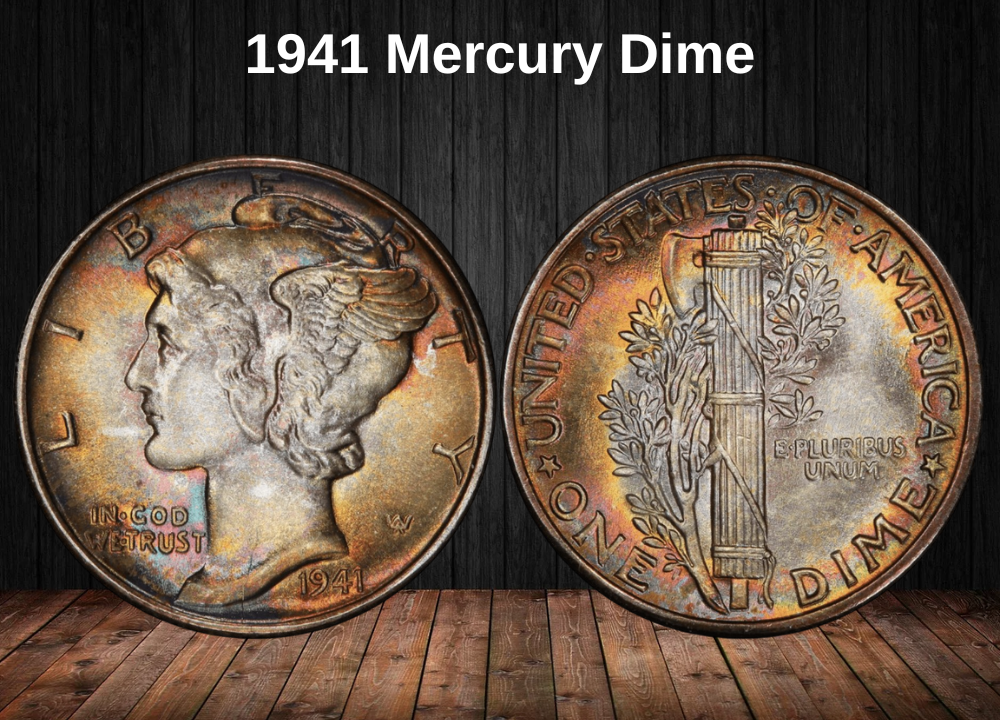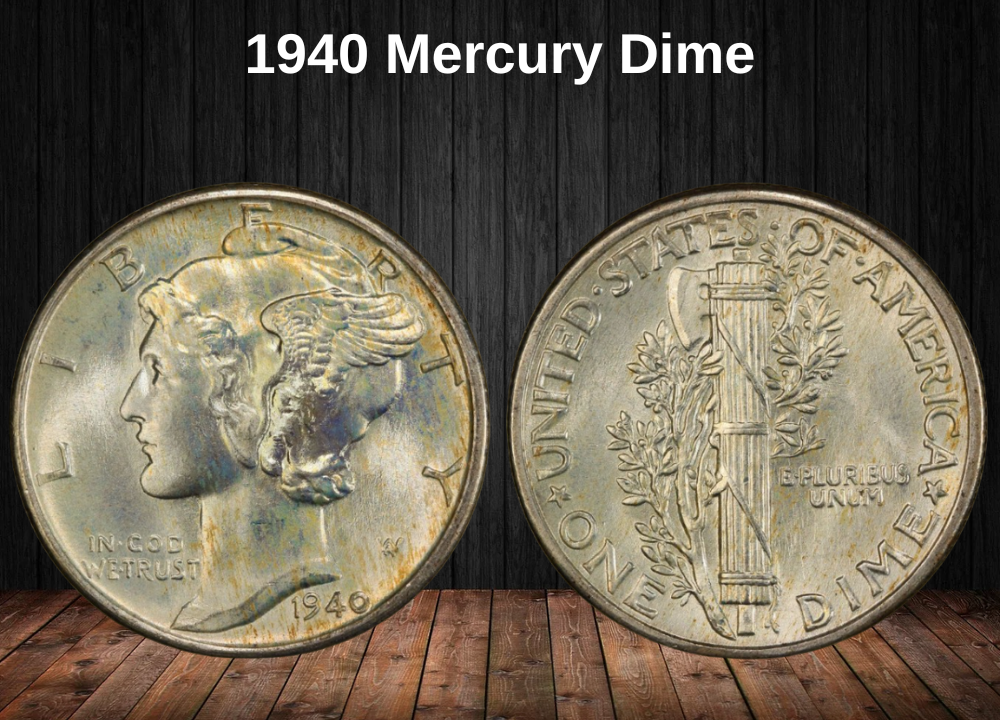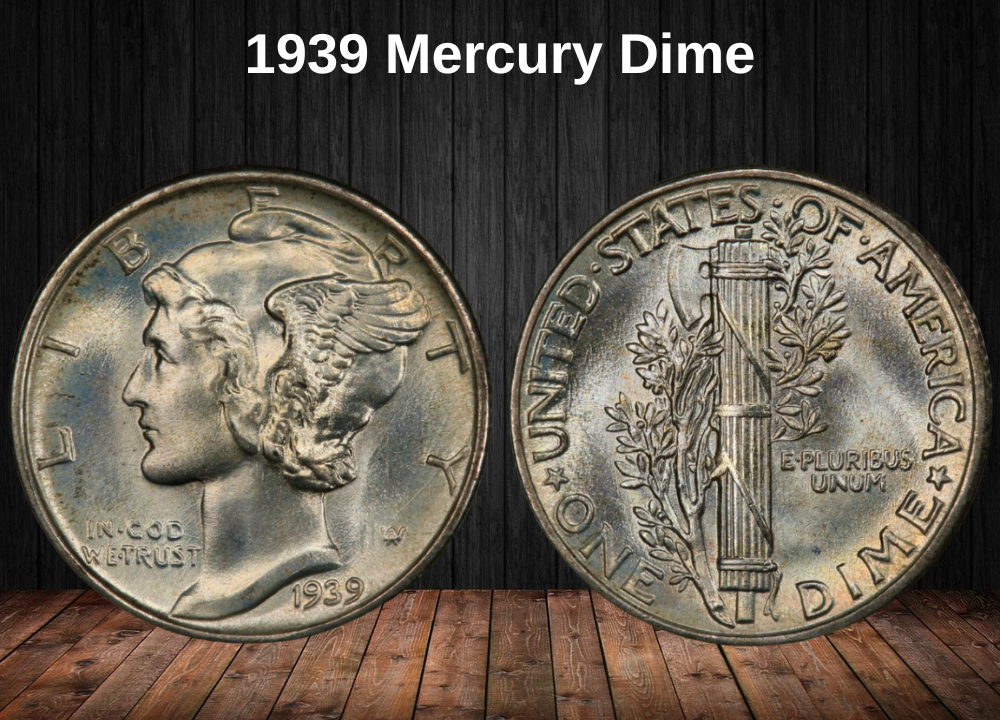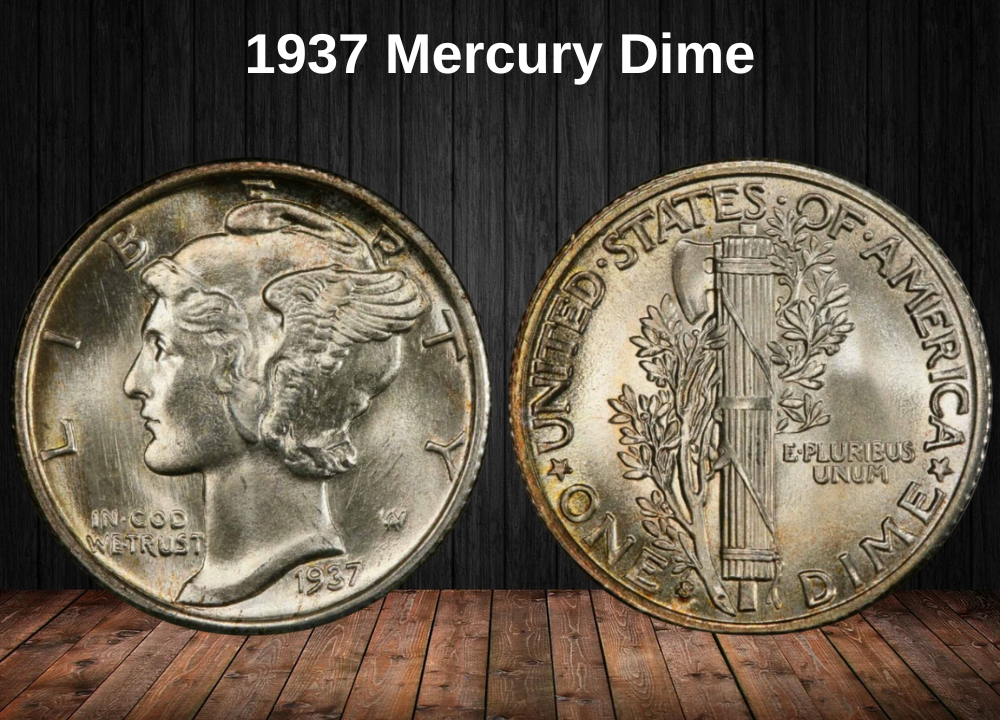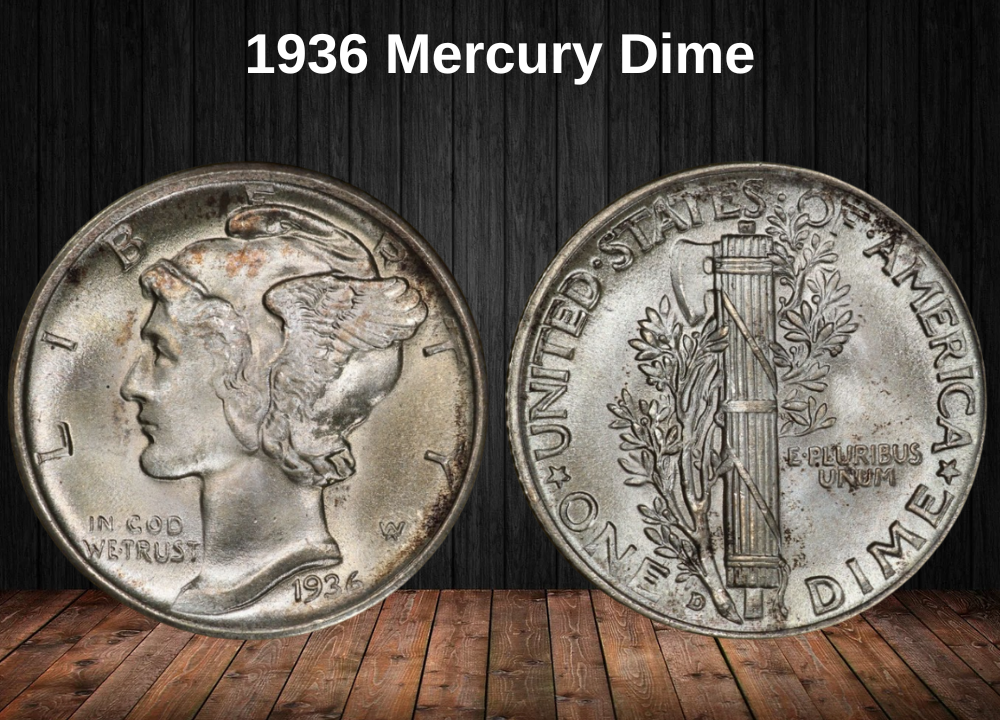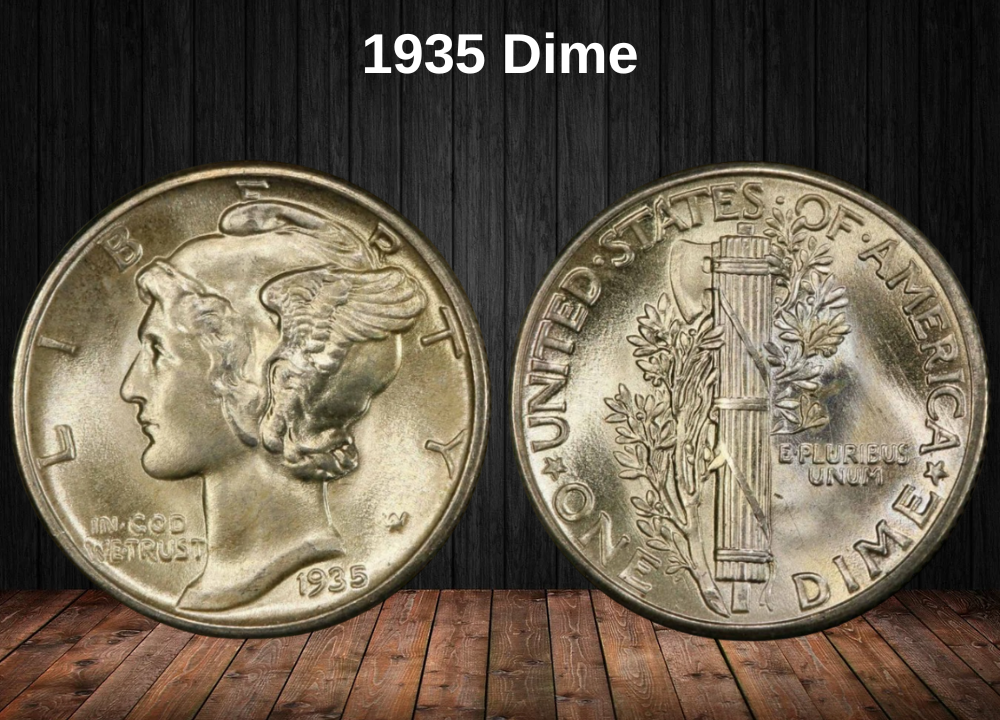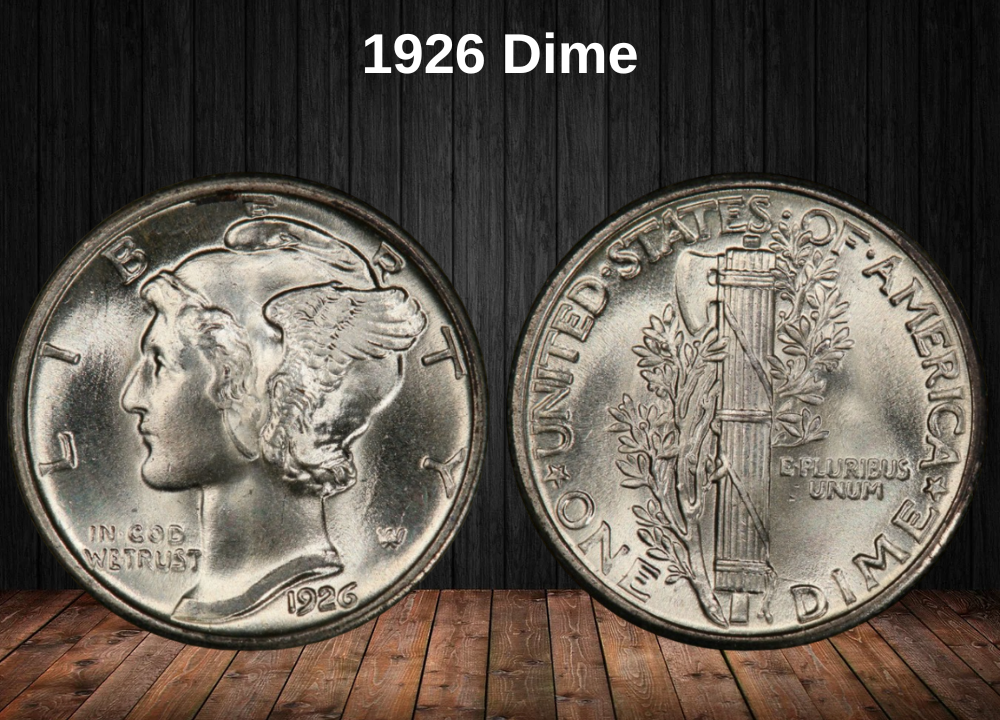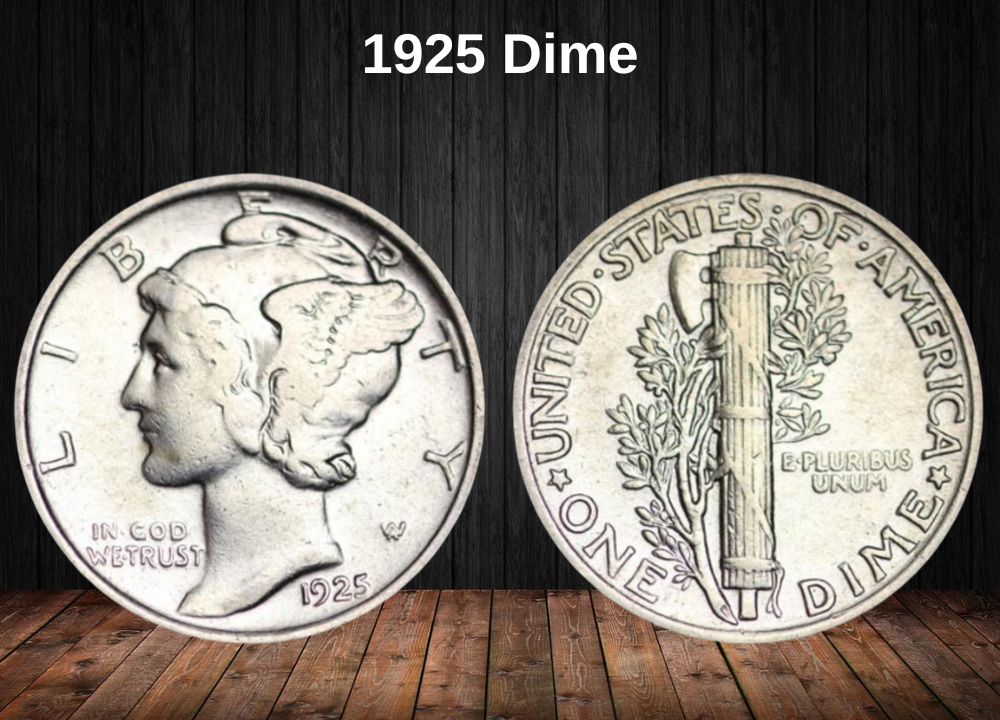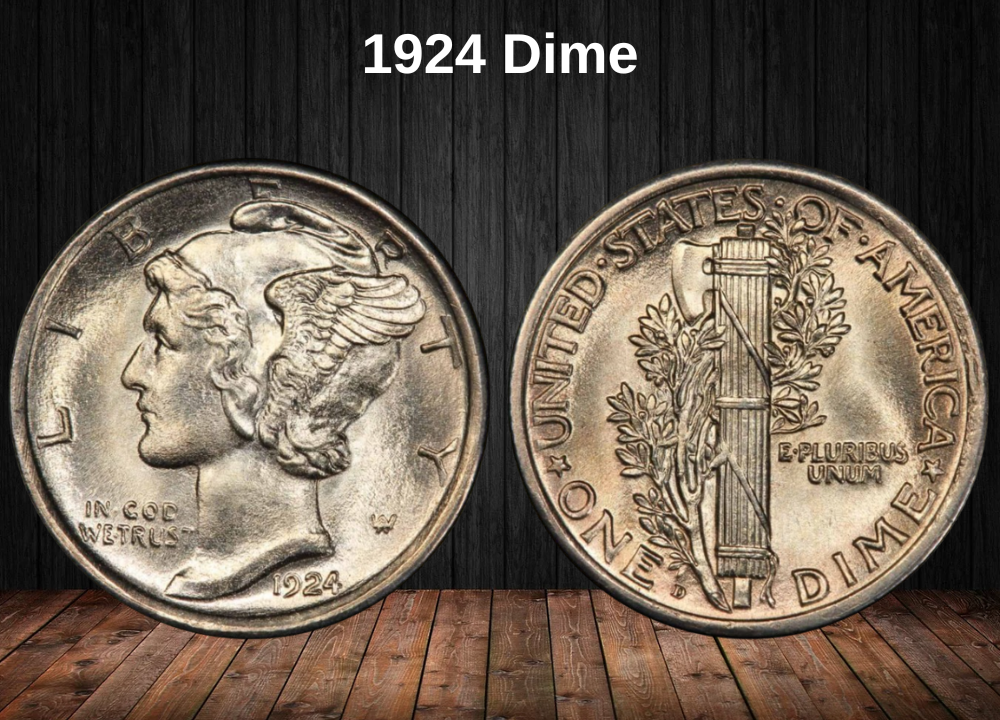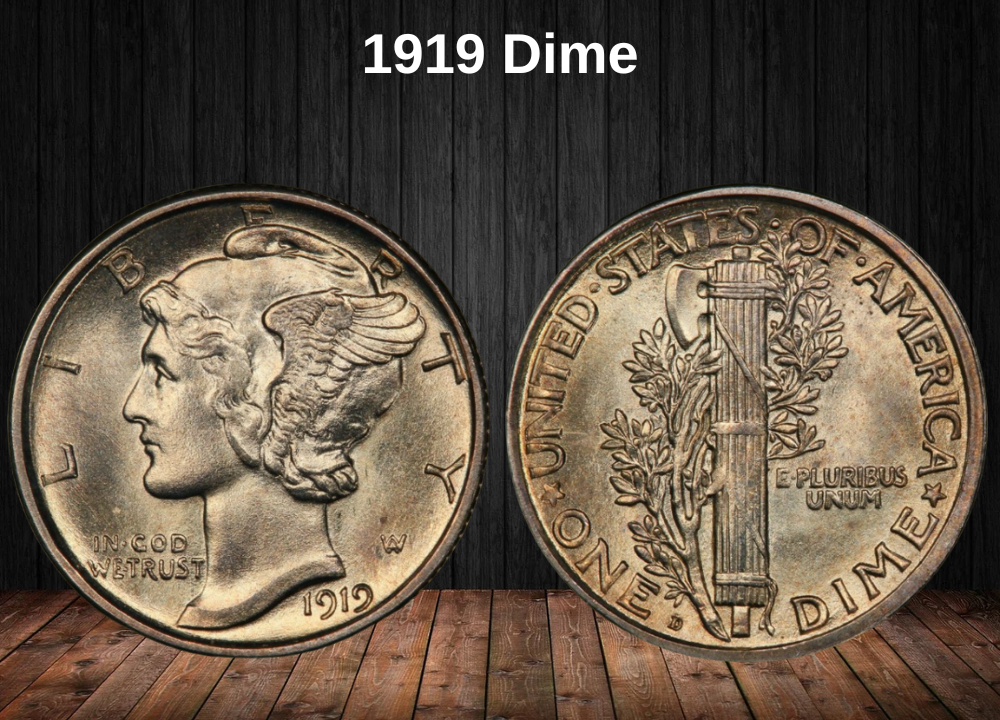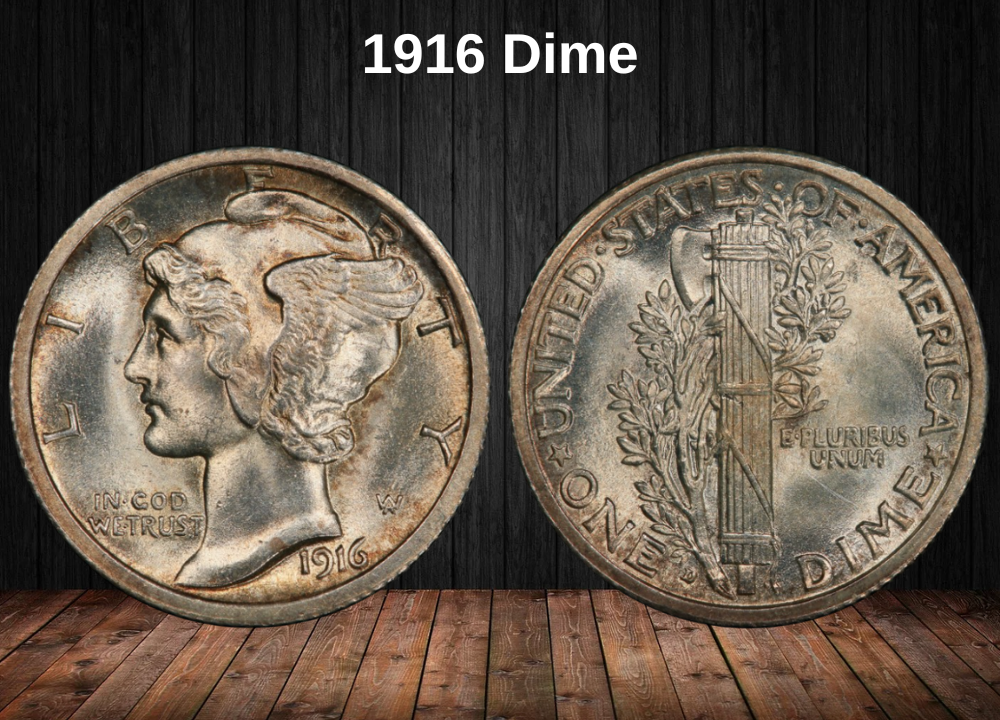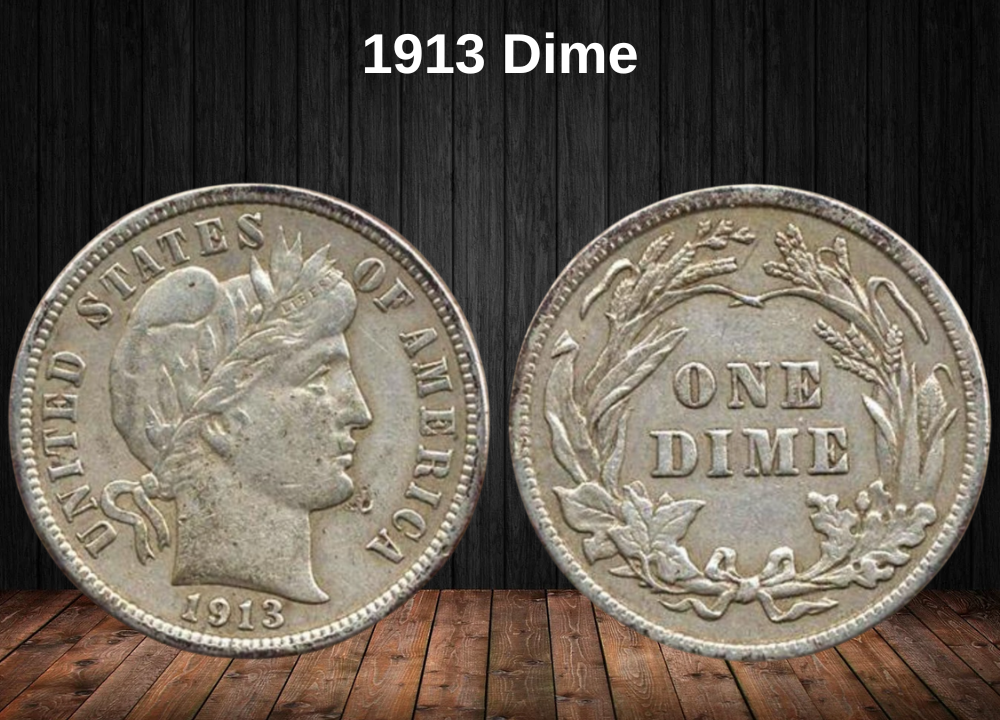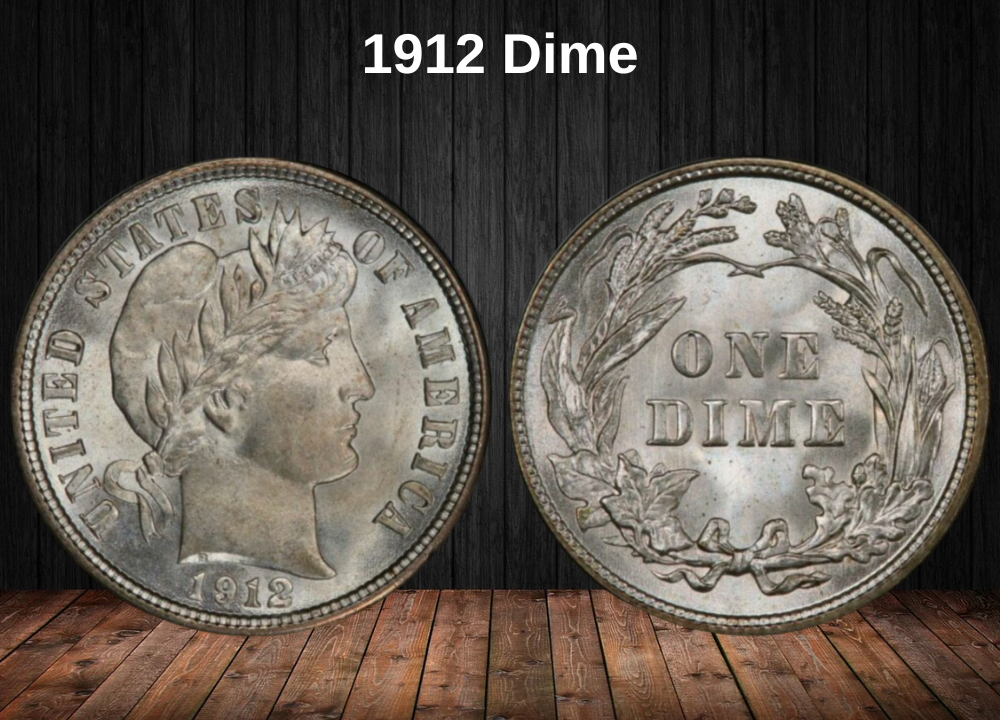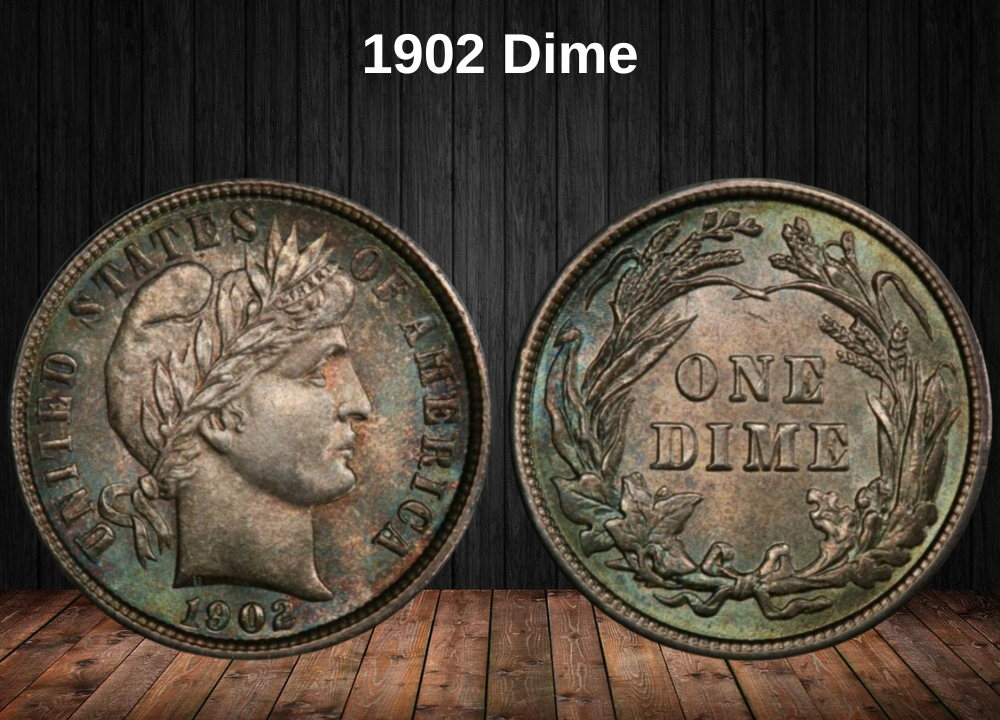The 1966 Roosevelt dime is part of one of the most significant transitions in modern U.S. coinage. While the Roosevelt dime series began in 1946 to honor President Franklin Delano Roosevelt, the year 1966 marks only the second full year of clad composition, following the elimination of silver in 1965.
Earlier dimes (1946–1964) were struck in 90% silver, making them more valuable today due to bullion content. By contrast, the 1966 dime is made of a copper core clad with a nickel alloy, and therefore, its value depends entirely on condition, rarity, and error varieties.
1966 Dime Value Chart
| Condition | Value (No Mint Mark) |
|---|---|
| MS60 | $2 |
| MS63 | $4 |
| MS65 | $10 |
| MS67 | $150+ |
Note: Coins designated with Full Bands (FB) on the reverse torch carry higher premiums due to their sharp strike.
History of the 1966 Roosevelt Dime

The 1966 Roosevelt dime continues the legacy of a design first introduced in 1946, honoring the life and leadership of Franklin Delano Roosevelt, the 32nd President of the United States.
Roosevelt is remembered not only as the guiding force who led the nation through the Great Depression and World War II, but also as a philanthropist who dedicated his later years to public welfare. Despite his long battle with polio, Roosevelt worked tirelessly to improve the lives of others.
One of his lasting contributions was the founding of the March of Dimes in 1938, a nonprofit organization focused on maternal and infant health. He also helped establish the National Foundation for Infantile Paralysis, raising awareness and funds to combat polio across the nation.
To honor his achievements, the U.S. Mint released the first Roosevelt dime on January 30, 1946—Roosevelt’s 64th birthday. Designed by Chief Engraver John R. Sinnock, the coin has featured Roosevelt’s portrait on the obverse ever since.
The 1966 Mintages
| Location | Variety | Mintage |
|---|---|---|
| Philadelphia | 1966 No Mint Mark Regular Strike | 1,382,734,540 |
| Philadelphia | 1966 No Mint Mark Special Strike | 2,260,000 |
| Total | 1,384,994,540 |
Like the 1965 issue, all dimes produced in 1966 carry no mintmark, as the U.S. Mint suspended mintmarks from 1965 to 1967 in an effort to discourage coin hoarding.
From Mercury to Roosevelt
The Roosevelt dime succeeded the beloved Mercury dime (1916–1945), also known as the Winged Liberty Head. Sinnock’s initials “JS,” placed beneath Roosevelt’s portrait, became the center of controversy in the late 1940s when rumors suggested they were a hidden tribute to Soviet leader Joseph Stalin. Despite official clarifications, the Cold War climate kept suspicions alive for years.
Sinnock’s work, assisted by Gilroy Roberts (who later became Chief Engraver himself), created a design that has remained remarkably consistent. While the details of the bust and reverse torch have seen minor refinements, the Roosevelt dime’s overall appearance has endured for decades.
The 1965 Coinage Act and the 1966 Transition
A major turning point came with the Coinage Act of 1965, which permanently changed the dime’s composition. From its debut in 1946 through 1964, Roosevelt dimes were struck in 90% silver. Starting in 1965, however, they adopted a copper-nickel clad “sandwich” structure: a pure copper core bonded between two layers of copper-nickel alloy.
This transition was designed to address severe hoarding of silver coins and to preserve the nation’s circulating coin supply. Unfortunately, it also meant that Roosevelt dimes minted from 1965 onward lost their intrinsic silver value, making them less desirable from a bullion standpoint.
Features of the 1966 Roosevelt Dime
The 1966 Roosevelt dime was struck in both regular circulation strikes and in Special Mint Set (SMS) versions packaged for collectors. Each SMS included five denominations—Lincoln cent, Jefferson nickel, Roosevelt dime, Washington quarter, and Kennedy half dollar—replacing the traditional proof sets during the mid-1960s.
Though its face value is only ten cents, the 1966 dime carries historic significance as part of the early clad coinage era, following the removal of silver from dimes in 1965.
Obverse Design

The obverse of the 1966 dime features the left-facing portrait of Franklin Delano Roosevelt, designed by Chief Engraver John R. Sinnock.
- LIBERTY is inscribed along the left edge, aligned so Roosevelt appears to be “reading” the word, adding symbolic depth.
- The motto IN GOD WE TRUST rests beneath Roosevelt’s chin.
- The date 1966 appears to the right of the bust, accompanied by Sinnock’s initials JS just below the neckline.
- No mintmark appears, since all dimes struck from 1965–1967 were intentionally left without mintmarks to deter hoarding.
Sinnock’s original design faced challenges from the Commission of Fine Arts, with adjustments made to the placement of the inscriptions to ensure Roosevelt’s profile remained bold and proportional within the dime’s small 17.9 mm diameter.
Reverse Design
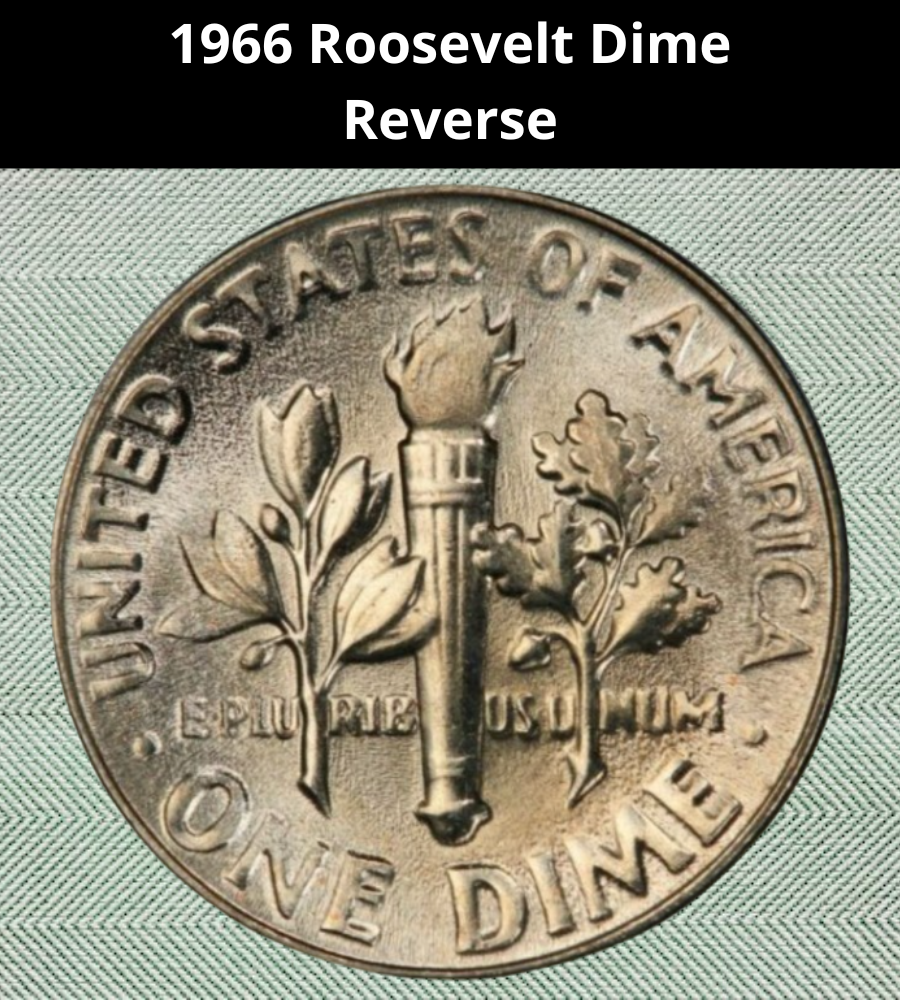
The reverse is a classic composition of liberty, peace, and strength, unchanged since the introduction of the Roosevelt dime in 1946:
- A torch in the center, symbolizing liberty.
- An olive branch to the left, representing peace.
- An oak branch to the right, symbolizing strength and independence.
- UNITED STATES OF AMERICA arcs across the top.
- The denomination ONE DIME anchors the bottom.
- The national motto E PLURIBUS UNUM (“Out of Many, One”) is positioned across the torch and branches, appearing interwoven with the design.
Early sketches even considered a hand grasping the torch and branches, but the simpler version ultimately prevailed, giving us the familiar reverse still seen today.
Technical Specifications of the 1966 Dime
| Feature | Details |
|---|---|
| Face Value | 10 cents (USD) |
| Shape | Round |
| Composition | 91.67% copper core, 8.33% nickel cladding |
| Weight | 2.27 g (0.08 oz) |
| Diameter | 17.9 mm (0.705 in) |
| Thickness | 1.35 mm (0.053 in) |
| Edge | Reeded, 118 reeds |
1966 Dime Grading
| # | Grade |
|---|---|
| 1 | Basal State-1 |
| 2 | Fair |
| 3 | Very Fair |
| 4, 5, 6 | Good |
| 7, 8, 10 | Very Good |
| 12, 15 | Fine |
| 20, 30 | Very Fine |
| 40 | Extremely Fine |
| 50 | About Uncirculated |
| 60 | Mint State |
| 65 | Mint State |
| 70 | Mint State |
1966 Roosevelt Dime Value Guides
The U.S. Mint struck 1,384,994,540 dimes in 1966, and for nearly 60 years these coins have circulated heavily across America. Today, most examples still found in pocket change are only worth their face value of 10 cents. However, high-grade Mint State pieces and Special Mint Set (SMS) coins can carry much higher values, with a few record-breaking specimens bringing thousands at auction.
1966 No Mint Mark Dime Value
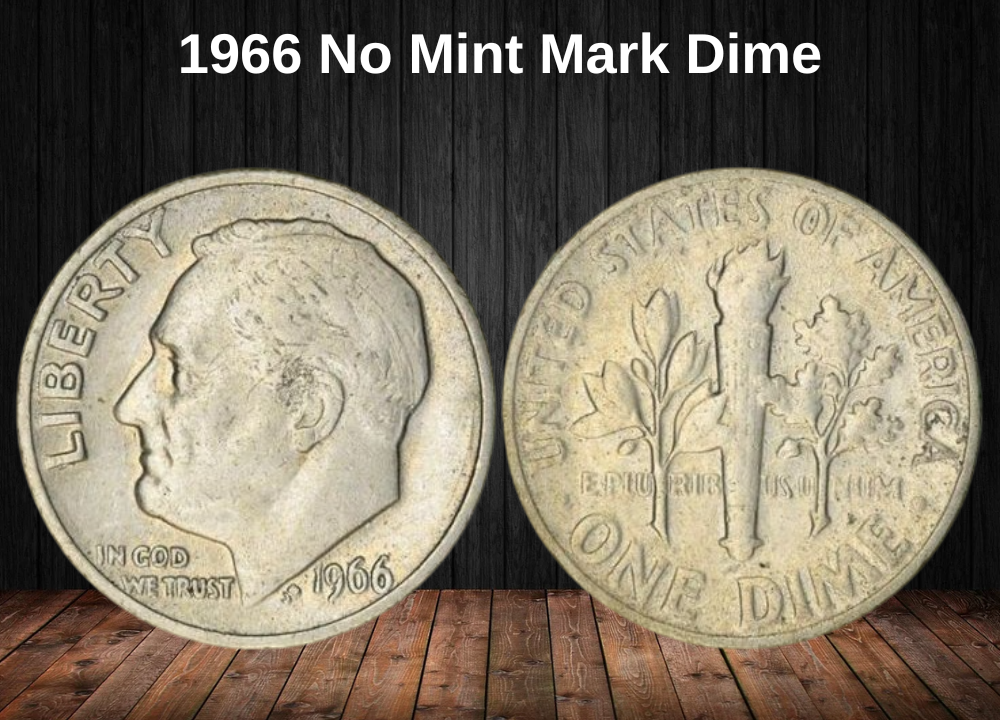
Like all dimes struck between 1965 and 1967, the 1966 Roosevelt dime carries no mintmark, regardless of origin.
- About Uncirculated (AU) and circulated grades: Face value (10¢).
- MS60–MS62: ~$4
- MS63: ~$5
- MS64: ~$6
- MS67: ~$30
- MS68: ~$725 (scarce)
👉 Auction highlight: A spectacular 1966 Roosevelt dime graded MS68 sold for $2,375 on eBay in November 2021, setting a strong record for the date.
1966 Dime from the Special Mint Set (SMS)
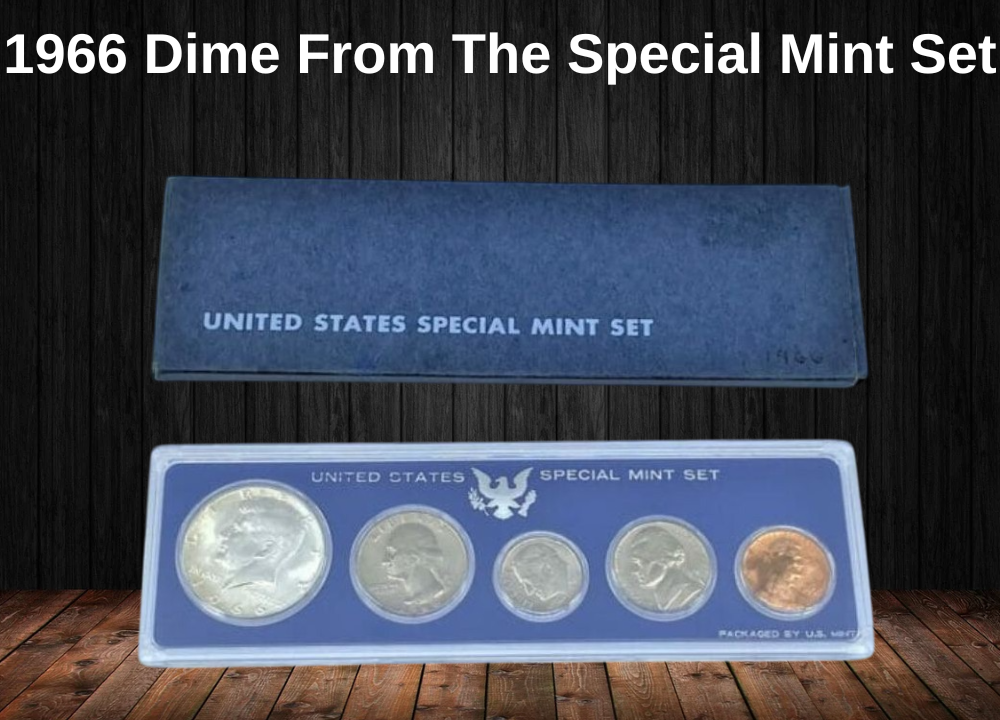
In 1966, the Mint issued 2,260,000 SMS dimes as part of the Special Mint Set program, replacing proof sets during the mid-1960s. These coins were struck with more care than circulation issues, and collectors recognize three categories: standard SMS strikes, Cameo (CAM), and Deep Cameo (DCAM) pieces.
Standard SMS Values
- SP63: $4
- SP64: $5
- SP65: $7
- SP66: $10
- SP67: $16
- SP68: $32
- SP69: ~$1,000
👉 Auction record: A 1966 SP67 dime sold for $12,500 on eBay in February 2021.
SMS Cameo (CAM) Values
Cameo coins display frosted devices against mirrored fields, a highly attractive contrast.
- SP65 CAM: $25
- SP66 CAM: $30
- SP67 CAM: $48
- SP68 CAM: $375
- SP69 CAM: $750
👉 Auction highlight: A 1966 SP68 CAM dime sold for $1,035 at Heritage Auctions in May 2004.
SMS Deep Cameo (DCAM) Values
Deep Cameo dimes show dramatic contrast, with heavy frost and deep mirrors—these are the most sought-after SMS issues.
- SP66 DCAM: ~$800
- SP67 DCAM: ~$2,600
- SP68 DCAM: ~$7,850
- SP69 DCAM: ~$4,500 (estimate)
👉 Auction highlight: The record for this variety is a 1966 SP68 DCAM dime, sold for $2,760 at Heritage Auctions in January 2007.
Rare 1966 Dime Error List
For collectors, imperfections often transform otherwise common coins into sought-after treasures. The 1966 Roosevelt dime, despite being a clad issue with no silver content, can be highly valuable when struck with unusual variations or minting errors. Below are the most collectible errors known for this year:
Full Band Dime
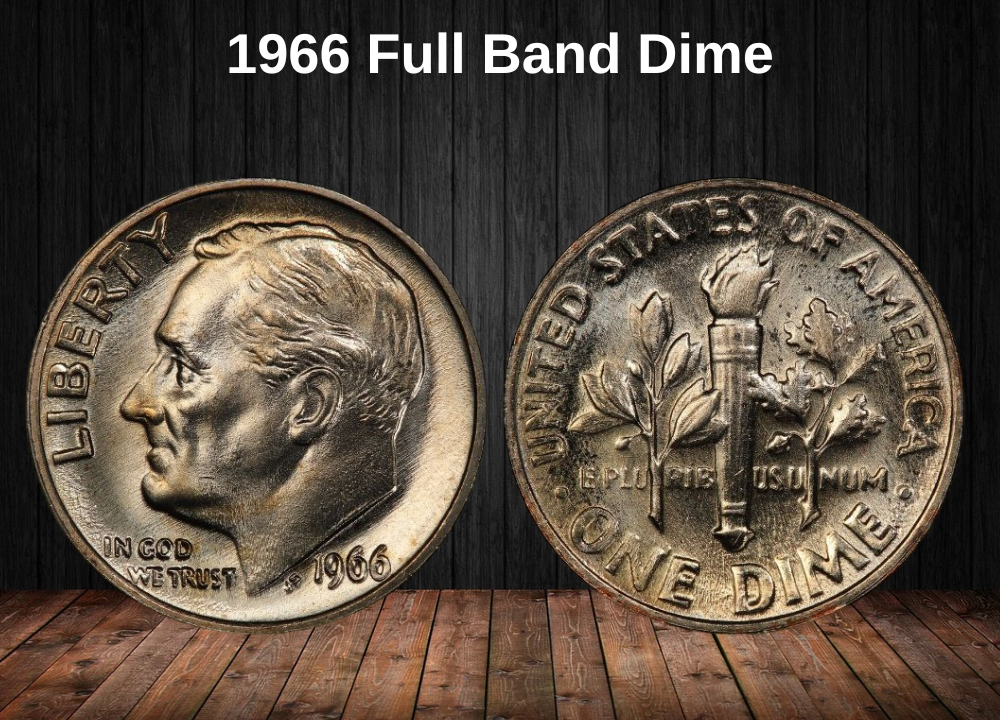
The most coveted regular-strike 1966 dimes are those with the Full Bands (FB) designation on the reverse torch. In these coins, all the horizontal bands at the top and bottom of the torch are sharply struck and fully separated, exactly as intended by the design.
- Typical value: $20 – $600 depending on grade.
- Scarce in MS68, where values can exceed $2,900.
- Auction highlight: A 1966 Roosevelt dime graded MS68 FB sold in 2013 for $2,820.
👉 Collector’s note: Because most 1966 strikes were weak, Full Bands coins are far scarcer than ordinary Mint State pieces.
Doubled Die
Doubled die errors occur when design details are impressed twice onto the die at slightly different angles. On 1966 dimes, this can affect the inscriptions—especially LIBERTY—or parts of Roosevelt’s profile.
- Value: Up to $600 for bold, dramatic doubling.
Clipped Planchet
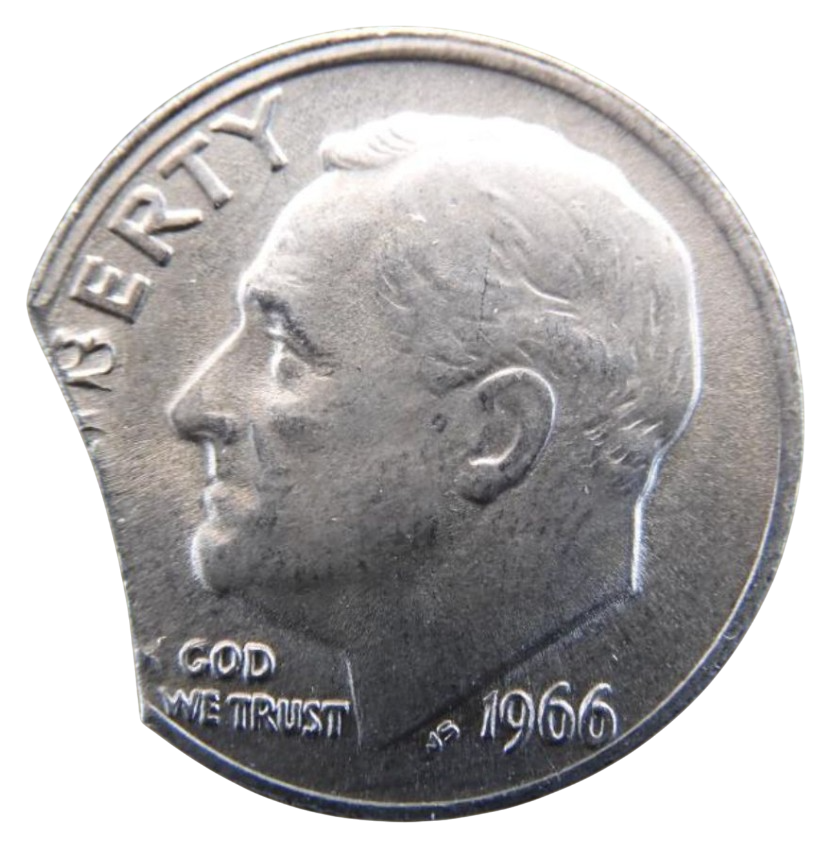
A clipped planchet error happens when a blank is mispunched, resulting in coins with curved or straight “bites” missing from the rim.
- Value: Around $30 depending on size and visibility of the clip.
- Collector’s note: While minor clips are modestly priced, dramatic curved clips can bring higher premiums.
Misplaced Die Error
One of the rarest and most unusual 1966 dime errors is the misplaced die number. In some examples, the numeral “5” of the date appears impressed onto Roosevelt’s face, creating a striking visual anomaly.
- Scarce and highly collectible.
- Value: Over $2,000 at auction.
Where to Sell Your Dime Coin?
Now that you know the value of your dime, the next step is deciding where to sell it. There are several trusted options—both online and in person—that can help you get the best price depending on your coin’s rarity and condition.
To see the full list of recommended places, along with their advantages and disadvantages, check our complete guide on where to sell your dime coins.
FAQ about the 1966 Roosevelt Dime
1. Why is the 1966 dime historically significant?
The 1966 Roosevelt dime represents the second year of clad coinage, following the 1965 transition from 90% silver to a copper-nickel composition. It symbolizes the end of precious-metal coinage for small U.S. denominations and reflects the economic adjustments of the 1960s.
2. Why do 1966 dimes have no mint mark?
Between 1965 and 1967, the U.S. Mint suspended mint marks on all coins to discourage hoarding during the silver-to-clad transition. Therefore, all 1966 dimes—whether struck for circulation or included in Special Mint Sets—appear without a mintmark.
3. What is the value of a 1966 Roosevelt dime?
Circulated examples are worth face value (10¢) since they contain no silver. Uncirculated coins in MS65 sell for around $10, while high-grade MS68 pieces can bring $700–$1,000. Auction records show exceptional specimens selling for over $2,300.
4. What is a Full Bands 1966 dime, and why is it valuable?
“Full Bands (FB)” refers to the fully separated horizontal bands on the torch on the reverse. Because most 1966 dimes were weakly struck, FB examples are scarce and highly collectible. In top grades, they can sell for $600–$2,900, with record pieces exceeding that.
5. What are 1966 Special Mint Set (SMS) dimes?
Instead of proof sets, the Mint issued Special Mint Sets (SMS) from 1965–1967. These dimes were struck with higher quality and often show Cameo or Deep Cameo contrast. While common in lower grades ($4–$30), rare SP69 Cameo or Deep Cameo dimes can bring thousands of dollars at auction.
6. What errors make the 1966 dime valuable?
Some of the most collectible errors include:
- Doubled dies, showing doubled lettering (worth up to $600).
- Clipped planchets, with missing metal at the rim ($30+).
- Misplaced die errors, such as the number “5” appearing on Roosevelt’s face ($2,000+).
- Missing clad layers, revealing the copper core ($75–$200).
7. Is it worth keeping 1966 dimes found in circulation?
Most circulated 1966 dimes are worth only face value. However, it’s always worth checking for:
- Uncirculated high-grade coins.
- Full Bands designations.
- SMS Cameo/Deep Cameo examples.
- Rare minting errors.
These rarities can turn an ordinary clad dime into a desirable collector’s piece.


